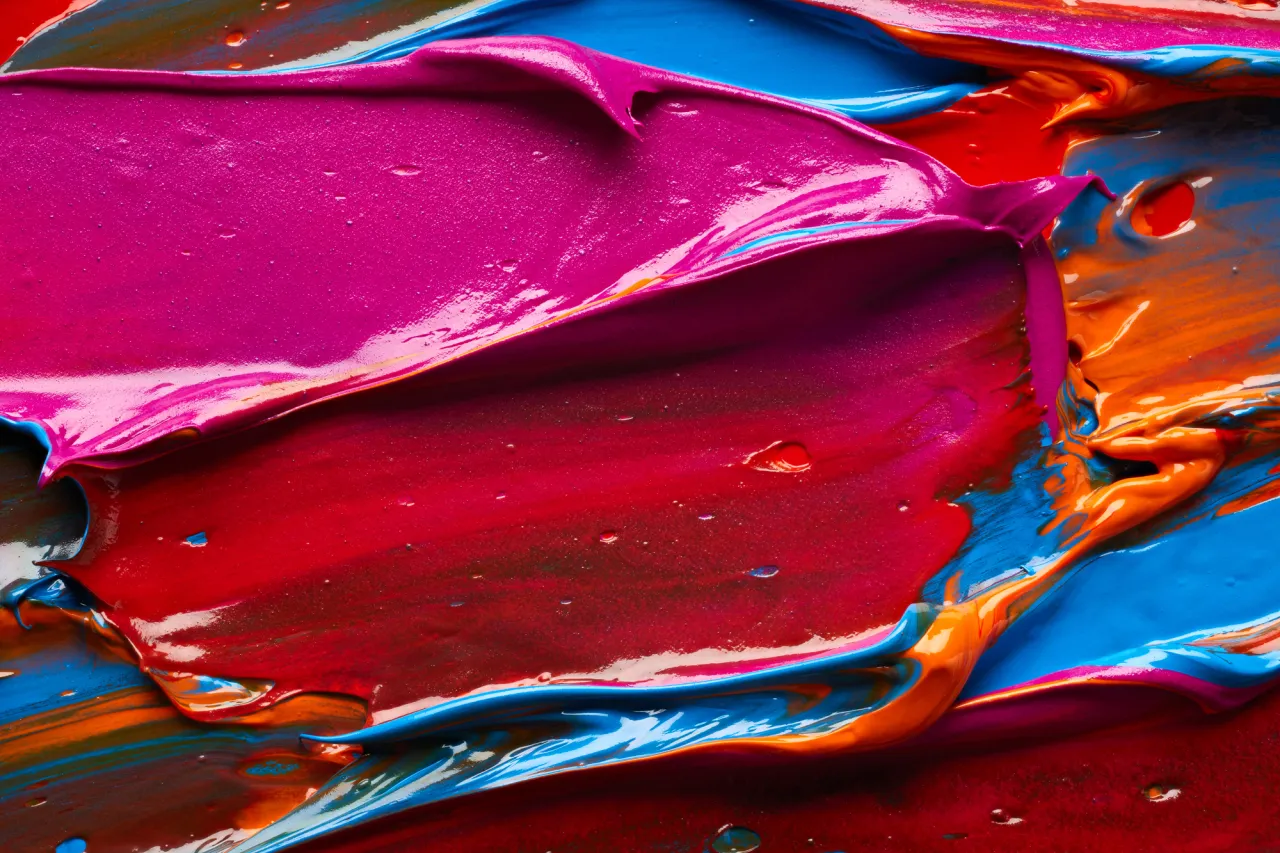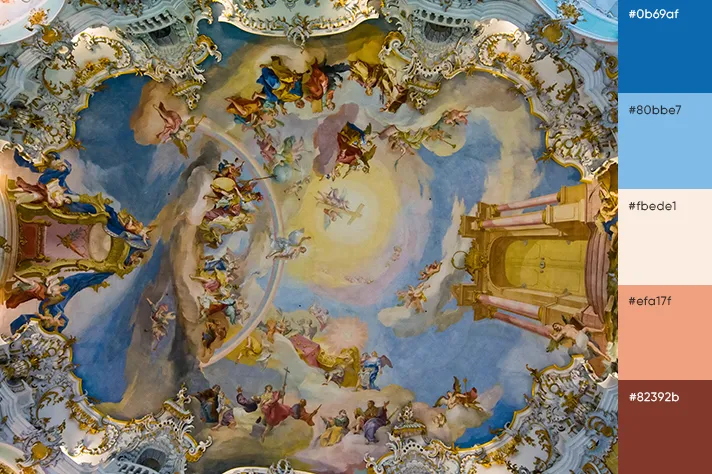What is Digital Design? A Comprehensive Guide on its Types, Tools, and Best Practices
If you’re building a website, launching an app, or developing a marketing campaign, effective digital design is an integral part of your success. The way your digital content interacts with users decides whether they like their digital experience—and your brand. Understanding the complexities of creating digital design can help you make more engaging, functional, and visually appealing user experiences.
In this article, we’ll provide practical tips on how to make your digital designs better. Keep reading to find inspiration and learn the best strategies to achieve remarkable results for your brand.
What is digital design?
Digital design involves the creation of visual content for digital platforms—websites, mobile applications, digital ads, social media graphics, and so on. It has different types, such as UI/UX design, digital illustration, and even design for immersive environments. But labeling it as just a “visual practice” is not correct. It incorporates elements from various disciplines to create digital products that are not only visually compelling, but also functional. The objective is not just making design look good, but also facilitating effective visual communication and user-friendly interaction.
Companies often turn to digital design agencies to help brand their digital presence, ensuring that their visuals align with their target audience. Digital design also includes a set of tools and software, from the classic Adobe Creative Suite to specialized software for 3D modeling, animation, and more.
What is the difference between digital design and graphic design?
Although sometimes used interchangeably, the terms digital design and graphic design refer to different areas. Graphic design focuses on visual communication. It includes a wide range of media and formats, both print and digital. Graphic designers may work on projects from branding and advertising to book covers and product packaging. Essentially, it’s used to convey a specific message through the use of visuals and typography.
Digital design, on the other hand, is a part of graphic design that deals with designs for digital platforms. This could include website interfaces, digital illustrations, social media graphics, and more. Digital designers often focus on creating content that is visually engaging and optimized for digital interactions.
Graphic design largely deals with static visuals, such as posters or packaging, while digital design often involves creating dynamic experiences that includes navigation and interaction with users. As a result, each field requires different skill sets. Digital design courses frequently include learning coding languages like HTML and CSS, specific digital design software, and user experience, while graphic design courses focus more on principles like color theory, typography, and layout design that can be used in a range of media.
Learn more about graphic design and its types with detailed examples: Graphic Design Types with Examples & Tips
Types of digital design
1. Web design
Web design focuses on the layout, visual appearance, and usability of websites. It comes with challenges and often requires a good understanding of digital design principles like grid systems, color theory, and typography, along with some basic coding skills.
2. UI/UX design
UI/UX design is essential for any digital product that requires user interaction, such as apps, websites, and software. UI is about the look of the digital product, while UX is concerned with the user experience—making visuals intuitive and user-friendly. It’s important because it plays a crucial role in customer satisfaction and retention.
3. Motion graphics
Motion graphics involves creating animated or digital video content. It’s commonly used in advertising, video games, and promotional videos. As video content becomes more and more popular across various platforms, motion graphics has made its way to a highly important sphere.
4. Digital illustration
Digital illustration involves creating visuals using digital design tools and software. It’s commonly used in graphic novels, video games, and advertising. Unlike traditional illustration, digital artists have the flexibility to easily edit and incorporate multimedia elements, making it one of the most popular types of digital design.
5. 3D modeling and animation
3D design deals with creating and rendering objects in a three-dimensional space. Its immersive nature provides a richer experience than 2D design. It enables designers to create more realistic visuals that are more engaging for the viewer.
6. Interaction design
Interaction design focuses on the interactions between users and products to ensure that users can achieve their objectives in the most efficient way. Its aim is to improve usability and user experience by making visual elements more intuitive and satisfying to engage with.
7. AR/VR design
As technology advances, AR/VR have become increasingly common in digital design. These types of design focus on the user experiences in augmented reality (AR) and virtual reality (VR) environments. AR overlays digital information on the real world through devices like smartphones or AR glasses, and VR provides a fully immersive experience where users can interact in a completely digital environment.
8. Data visualization
Data visualization involves the representation of data in a graphical format to make complex data easier to understand. By using visual elements like charts, graphs, and maps, data visualization designers can provide an accessible way to perceive and interpret trends and patterns in data.
Elements in digital design
- Lines. Lines can serve multiple purposes, such as separating content, directing user attention, or creating textural effects. Whether they are solid, dashed, or dotted, they are often used to establish hierarchy within a design. For example, lines can be used to separate menu items, underline hyperlinks, or frame images. By delineating sections on a webpage, they can add structure, thus making it easier for the user to navigate information.
- Shapes. Shapes are the basic elements for creating icons, buttons, and other interactive elements. In UI/UX, the shapes of elements can influence user expectations and actions. The right use of shapes can draw the eye and guide users towards desired actions, like filling out a form or making a purchase.
- Color. Perhaps one of the most impactful elements, colors can set the whole mood of a visual. They can evoke different emotions, attract attention, and influence user behavior. Understanding the psychology of color and using the right color schemes is essential in building effective visual communication.
- Typography. The choice of typography is important because it plays a crucial role in readability and user engagement. The right choice of font style, size, line height, and spacing impacts how easily users consume and understand content. Users often just skim content, so effective typography needs to capture attention and direct it to key messages of a design.
- Visuals. Photographs, illustrations, and other visuals can enrich your narrative and make a design more engaging. High-quality, relevant visuals can support written content, illustrate concepts, or simply add engagement to your digital platform
- Textures and patterns. Textures and patterns can enrich your visuals and give them more tactility. However, they need to be used wisely to be in harmony with other elements and avoid overwhelming the user.
- Space. White space (or negative space) is the area around elements. Often overlooked but incredibly significant, it enhances readability, focuses attention, and adds simplicity to your designs. White space can improve user experience by making the interface easier to navigate.
Don’t miss out on the latest color trends and curated collections: Fall Color Trends 2023: Captivating Palettes, Curated Collections & Design Inspiration
What makes good digital design?
1. Balance
One of the foundational principles, balance refers to the equal distribution of visual weight within a design. Achieving harmony within your design enhances stability and creates a more pleasing layout. To achieve it, you can opt for symmetry, asymmetry, or radial arrangement.
2. Contrast
Contrast is used to draw attention to particular elements of a design and make users focus on it. It can be achieved through elements such as color, shape, size, or typography. Effective contrast not only highlights important features but also enhances overall navigability of a design.
3. Repetition
Repetition strengthens your visuals by tying together individual elements. This principle can be applied through the consistent use of fonts, colors, and styles, which can be particularly beneficial for brand recognition.
4. Proportion and scale
Proportion and scale deal with the relationship between different elements in terms of size and visual weight. Proper proportion and scale create harmony and cohesion, making your visuals more engaging and easier to perceive.
5. Alignment
Alignment refers to the arrangement of elements along a common edge or axis. This principle is vital for creating a clean and organized look. Proper alignment of text, images, or other visual components enhances the clarity of a digital layout.
How do you make your digital designs more effective?
1. Know your audience
Before diving into the process, it’s important to understand your target audience. Knowing your audience’s preferences will inform design choices that resonate with them. Create user personas to guide your choices. They can be used as examples for different segments of your audience to help you focus on tailoring to their specific needs.
2. Align with brand identity
Consistency is key in building brand recognition and trust. Ensure that your visual communication aligns with your brand’s established color palette, typography, and overall aesthetic. Develop a style guide if you don’t already have one. This should outline the use of all important elements when it comes to your visual identity.
3. Optimize for mobile
With a significant portion of users accessing digital content through mobile devices, responsiveness cannot be ignored. A mobile-responsive design is crucial for reaching a wider audience and offering a more comfortable user experience. Use responsive design frameworks and always test your visuals on multiple devices to ensure they’re fully optimized.
4. Use visual hierarchies
Effective principles like visual hierarchy can guide the user’s eye to the most important information. For marketing strategies, this often means making the value proposition or call-to-action button most noticable. Utilize larger fonts and contrasting colors to make important elements stand out. Make use of digital design tools that allow you to play with spacing and layout to find the most effective arrangement.
5. Employ colors psychology
Utilizing the psychology of colors can impact your audience’s perception and actions, making it an important tool. If you’re designing a call-to-action button, using a color that contrasts with the background can make it more noticeable and encourage clicks. Familiarize yourself with color psychology and consider your target audience’s cultural context when choosing a palette.
6. A/B testing
A/B testing can offer valuable insights into minor changes that can significantly affect user engagement and conversion rates. Test different design elements to see what resonates most with your audience. Start small by testing one element at a time, such as a headline, call-to-action button, or image. But make sure you collect enough data to have statistically significant results before making any design changes.
7. Focus on UX
Good visuals are user-centric. A satisfied user is more likely to convert and return in the future. Conduct usability tests to identify areas for improvement by asking your target audience to complete specific tasks on your website while you observe. Optimize load times, improve navigation, and ensure readability to provide a better user experience.
Find out more about creating effective landing pages: The Complete Guide to Creating High-Converting Landing Pages
8. Accessibility
Successful visual communication should be accessible to as many people as possible, regardless of their physical abilities or technological constraints. Identify accessibility issues. Make sure your text is easily readable, and that you use alt text for all images. Ensure your website is navigable via keyboard commands for those who can’t use a mouse or touchpad.
9. Track, analyze, and adapt
Utilize analytics tools to track user behavior and interaction with your digital designs. Google Analytics is a good starting point for tracking user behavior. Set specific goals and KPIs to measure, then analyze this data regularly and adapt your designs based on what you learn. These insights allow you to make data-driven adjustments to your digital strategies.
10. Keep updated with trends
Staying on top of the most recent trends in design can give you a competitive advantage. While core digital design principles remain unchanged, the industry is always evolving with new technologies that you need to keep the track of. Look at digital design examples, follow leading blogs, attend webinars and conferences, and join design communities.
To wrap up
Digital design influences user engagement, shapes brand identities, and often determines the success of online platforms. The field is constantly evolving, introducing new digital design tools, technologies, and trends. Standing aside is not an option—only with continuous learning and adaptation can you stay relevant. Bookmark this article, as it will serve you as a basis for creating effective projects.
Other articles that you might find interesting
Fall Color Trends 2023: Captivating Palettes, Curated Collections & Design Inspiration
Graphic Design Trends 2023 [Infographic]
Your Essential Guide to Adaptive Design: Key Principles and Techniques











![Gradient Color Palettes for Your Next Design Project [Infographic]](https://depositphotos-blog.s3.eu-west-1.amazonaws.com/uploads/2019/08/Gradient-Color-Palettes-for-Your-Next-Design-Project-Infographic.webp)


